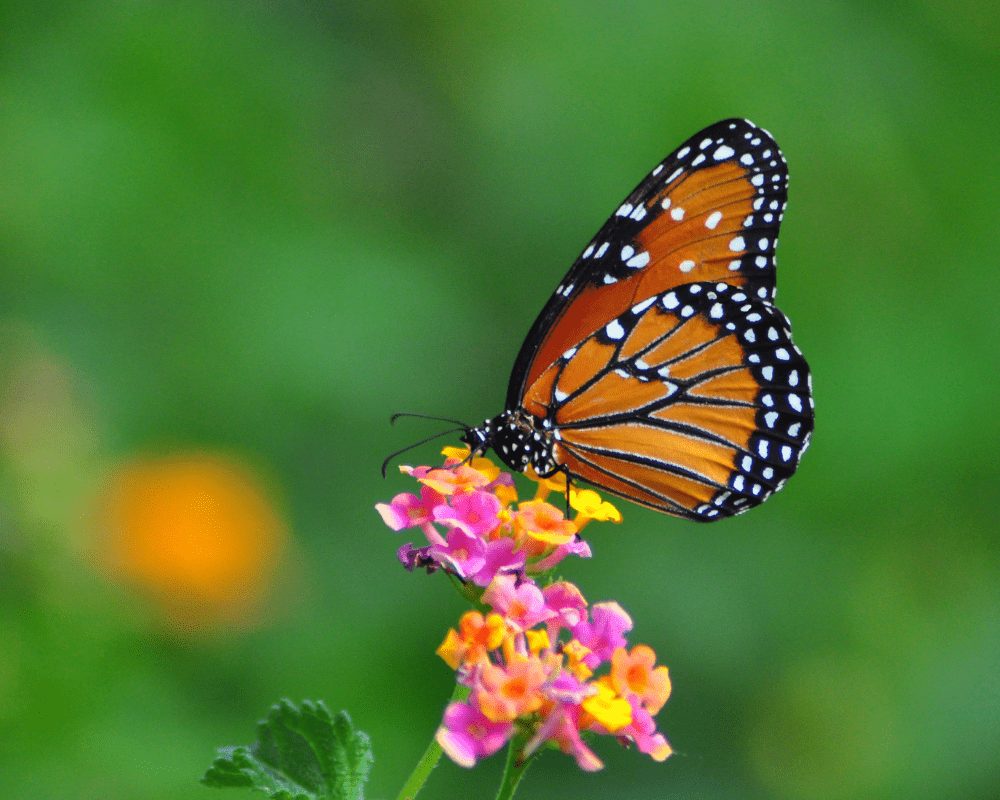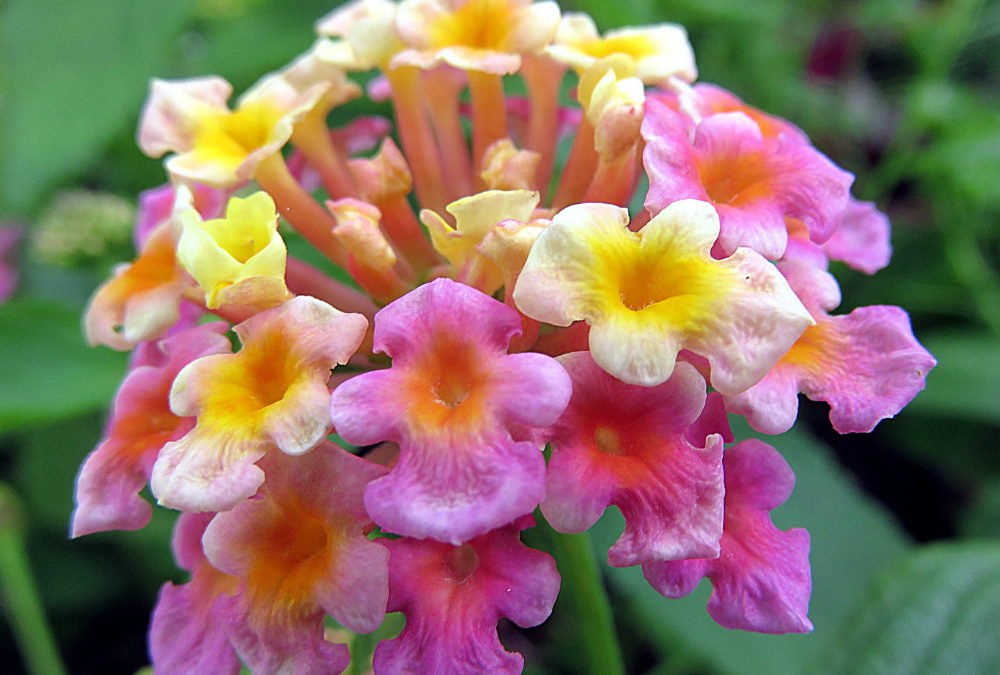Confetti lantana has always been a favorite of many of our customers, and the colors of this lantana live up to its name. These flowers look like a party! A pleasing combination of yellow, pink and magenta make a nice pop of color in the garden, but still maintain a sense of softness. Pollinators are always flitting around or lazing atop a cluster of lantana flowers and Confetti never fails to be a favorite.
Confetti lantana (Lantana camara) is a non-native, non-sterile variety of lantana. I hope you’ve given, “Lantana: Long-Flowering, Heat Tolerant Perennial”, a look already and have learned a little more about the differences between non-sterile and sterile lantana. I’ll give you a hint. It has something to do with those berries you see in the photo below.) It always helps to learn about your choices so you can make an informed decision.

Confetti Lantana (Lantana camara) Quicklook
Classification: Woody Perennial
Average size: 2’-3’’ T x 5’ – 6’ W
Winter Hardiness: 28°F, may die back to roots (winter mulch helps protect)
Light Requirement: Full Sun for best blooms
Soil Preference: Well draining, no particular soil need
Water Requirement: Low Usage once established
Pests: Deer/Rabbit resistant, sometimes Lace bugs bother it
Fungus Issues: None of great note
Bloom Period: Spring through fall
Bloom Color: Pink, Yellow, Magenta

More About Confetti Lantana
Confetti lantana is a sunshine-loving, spreading evergreen perennial. It grows wider than taller. In its complete natural state it can reach as far as 8 feet wide, but in general your specs here in San Antonio will most likely line up with those in the Quicklook section above. These look great weeping over and softening up rock walls or spilling out of large containers. Confetti lantana can stretch out for a stand alone spot in the landscape as well. Plant woody perennials in the fall or very early spring if you can. This gives them their best start and allows them time to get their roots established before the heat of our summers.
When Confetti lantana, or any other lantana variety is established, they are low water users and one of the best heat tolerant plants for San Antonio summers. It is still always recommended to offer supplemental irrigation in long periods of drought and hot weather. Lace bugs are a common pest of Confetti lantana but can be prevented with an application of horticultural oil in the winter, and controlled with multiple options of insecticide. I think you’re better off preventing Lace bugs with the oil in winter when lantana isn’t flowering than risking harm to pollinators by spraying when the problem coincides with flowers in bloom and visiting pollinators.
I’m pretty sure when you visit Rainbow Gardens in spring and fall that Confetti has caught your eye. If not this yet, I bet you will be on the lookout for it now.
~The Happy Gardener, Lisa Mulroy

